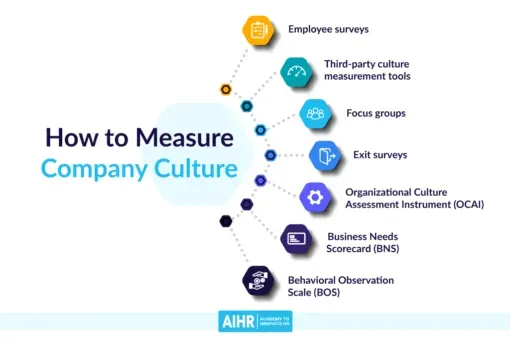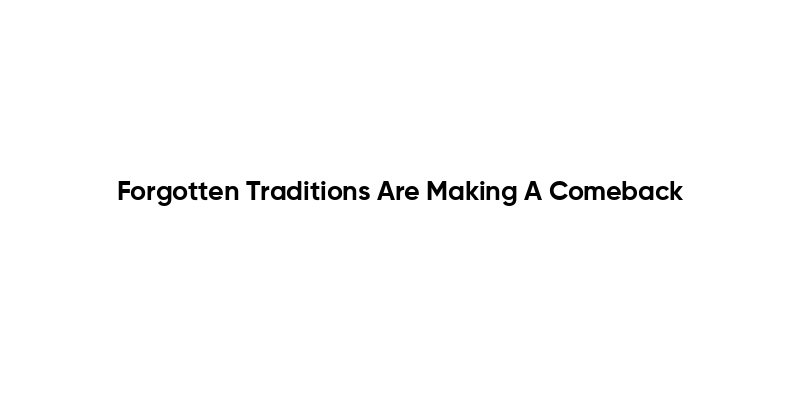Measuring culture is a dynamic, essential task for researchers, policymakers, and communities seeking to understand how beliefs, practices, artifacts, and languages shape daily life, influence social interactions, and guide collective responses to change. Rather than reducing culture to a single metric, effective measurement captures the multidimensional fabric of culture and traces how values travel across generations, institutions, and networks, producing a nuanced view of the cultural landscape. To be useful for decision makers, we combine culture metrics with qualitative insights to reveal how ideas travel, how norms solidify or shift, and how social cohesion is strengthened or frayed in different settings. The approach emphasizes clear indicators, rigorous validation, and ethical safeguards, while aligning with methods for measuring culture and the realities of diverse communities. By focusing on participation, meaning, and context, researchers can illuminate how culture shapes opportunities, policy choices, and everyday life, and how thoughtful interventions can foster inclusive growth.
Beyond the core framing, this work is described as assessing cultural dynamics, tracing how communities interpret meaning, and watching how shared values evolve in everyday life. This alternative framing aligns with sociocultural analysis, focusing on patterns, narratives, and institutions that influence behavior, communication, and collaboration across neighborhoods and nations. By adopting this wider lens, researchers emphasize context, diversity, and ethics, ensuring that insights support inclusive policies while respecting local histories and meanings.
Measuring culture: Frameworks, indicators, and cultural impact measurement in practice
Measuring culture is not simply counting anything; it starts with a clear theoretical model that links culture to outcomes. Researchers use frameworks that map culture onto dimensions such as beliefs, practices, symbols, institutions, and language, creating a structure for cultural impact measurement. By combining quantitative indicators—surveys of values, participation rates, cultural indices—and qualitative insights from ethnography and interviews, we can assemble a multi-dimensional picture of culture and its effects on education, innovation, and social cohesion. Together, these steps illustrate methods for measuring culture that reveal not just what culture is, but what it does.
To ensure reliability and relevance across contexts, practitioners apply careful attention to validity, reliability, and comparability, including measurement invariance when instruments move between regions or groups. The sociocultural analysis lens helps interpret what indicators mean in each setting, revealing how cultural change in society emerges from the interplay among norms, power, and everyday practices. In this way, measuring culture becomes a tool for understanding not only what culture is, but how it evolves and shapes public life.
Culture metrics, sociocultural analysis, and policy: translating data into action
Culture metrics provide a concrete basis for policy design and program evaluation. When indicators are aligned with relevant outcomes—participation in cultural life, creative entrepreneurship, and educational exposure—governments and nonprofits can target investments that strengthen inclusion and social cohesion. The link between culture metrics and real-world effects supports evidence-based decision-making and clarifies how cultural change in society unfolds in schools, workplaces, and communities.
Ethical and practical considerations matter as metrics are scaled to policy contexts. Sociocultural analysis reminds us to center communities in interpretation, protect privacy, and avoid reinforcing stereotypes. Transparent reporting, pre-registered analyses when possible, and accessible presentations (policy briefs, dashboards, community reports) help translate data into action while maintaining trust among stakeholders.
Frequently Asked Questions
What are the core methods for measuring culture to support cultural impact measurement and culture metrics?
Core methods for measuring culture combine quantitative and qualitative approaches to support cultural impact measurement and culture metrics. Start by defining dimensions such as beliefs, practices, artifacts, language, and institutions, then map indicators to these dimensions with attention to validity, reliability, and comparability. Use quantitative tools—surveys, culture indices, and bibliometric data—for scale and trend analysis, complemented by qualitative methods like ethnography, interviews, focus groups, and discourse analysis for context and meaning. This mixed-methods framework translates living culture into actionable data for policymakers and communities while addressing ethical considerations.
How can sociocultural analysis and methods for measuring culture inform policy on cultural change in society?
Sociocultural analysis, combined with methods for measuring culture, provides a multi-level view of how cultural change in society unfolds from macro to micro levels. It relies on diverse indicators—beliefs, practices, outputs, and institutions—and sources from surveys, administrative data, and digital traces to monitor change over time. This approach emphasizes context, cultural meanings, and stakeholder voices, helping design inclusive policies that respect local norms while fostering cohesion and innovation. Ethical considerations, cross-cultural validity, and transparent reporting are essential to ensure findings translate into responsible decision-making.
| Aspect | Key Points |
|---|---|
| Purpose and approach | Measuring culture uses complementary indicators and mixed methods to reveal patterns of cultural influence, rather than reducing life to a single number. |
| Levels of culture | Culture operates at macro (national/regional), meso (communities, schools, workplaces), and micro (individuals) levels; each level shapes policy, norms, and daily life. |
| Frameworks and indicators | Define dimensions of culture (beliefs, practices, symbols, institutions, language); ensure indicators have validity, reliability, and comparability; cluster indicators into beliefs/values, practices/participation, and outputs/artifacts. |
| Quantitative methods | Large-scale surveys, cultural indices, and bibliometric metrics provide scale and generalizability and help track changes; must be interpreted with care. |
| Qualitative methods | Ethnography, interviews, focus groups, and discourse analysis provide depth and context to understand meanings behind indicators, complementing quantitative data. |
| Emerging data sources and digital traces | Social media, online communities, and digital archives offer real-time data on cultural expression; methods include text analysis, sentiment analysis, and topic modeling; challenges include privacy, bias, and representativeness. |
| Indicators and metrics within culture metrics | Examples across dimensions: beliefs/values (tolerance, trust), practices/participation (event attendance, language use), outputs/artifacts (literature, film, arts), institutions (heritage sites, libraries), socio-economic outcomes (creativity-driven entrepreneurship). |
| Challenges, limitations, and ethical considerations | Cultural evolution and cross-context comparability, measurement invariance, bias, consent/privacy concerns, avoiding stereotypes, and ethical reporting. |
| From data to policy and practice | Translating insights into policy and practice informs education, inclusive policies, and programs; enables monitoring of cultural change to assess policy impact. |
| Practical considerations for researchers and practitioners | Define clear questions and align indicators; use mixed-methods; pre-register when feasible; document data sources and limitations; engage with communities; present results in accessible formats. |
Summary
Measuring culture is a nuanced, ongoing effort to understand how cultural forces shape society. By integrating quantitative metrics with qualitative insights, researchers can reveal how culture influences education, health, innovation, and social cohesion. This descriptive synthesis emphasizes practical methods, reliable indicators, and ethical considerations that ensure measurements capture living, dynamic cultures while informing inclusive policy and practice.



